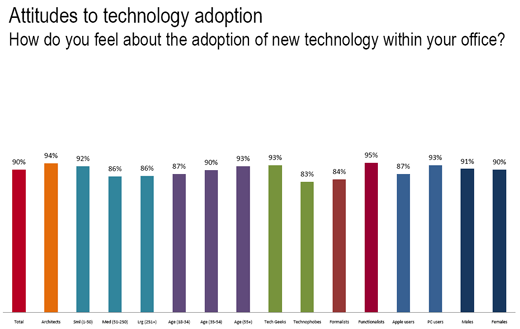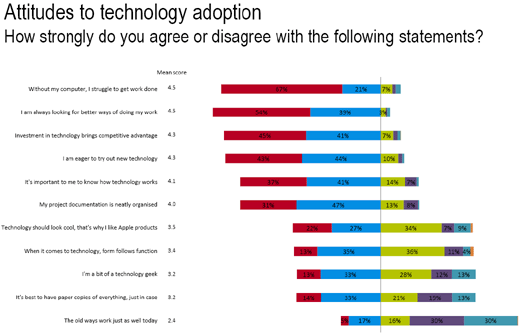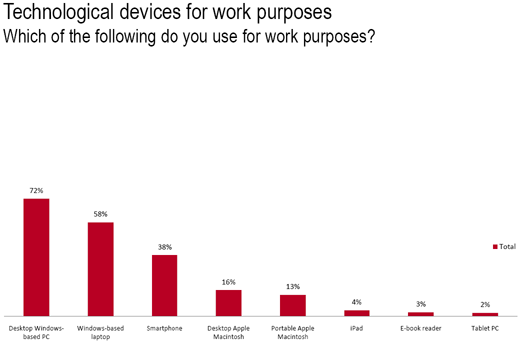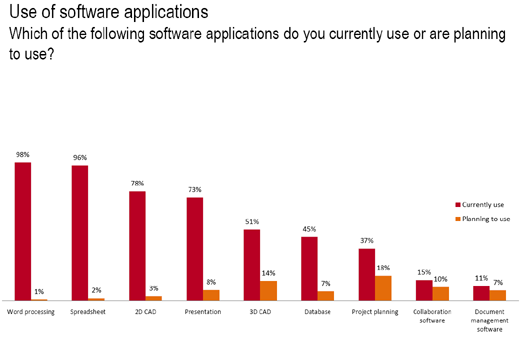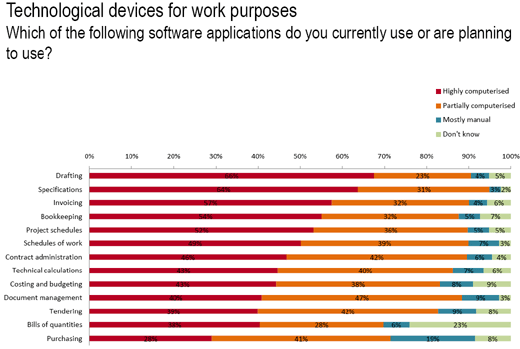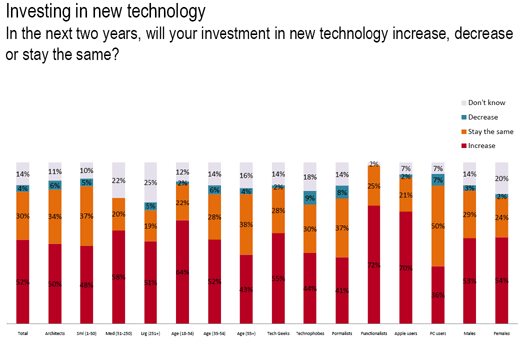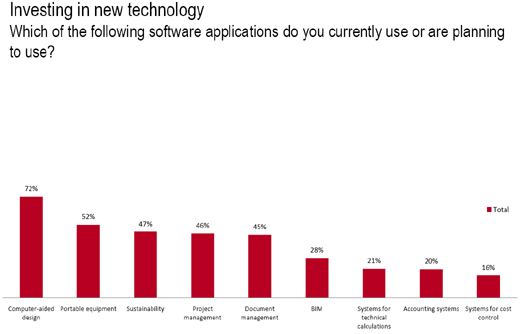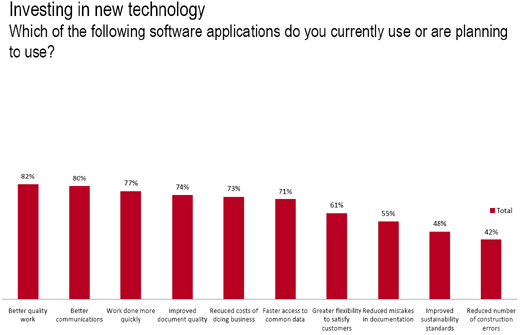The construction industry has a reputation for lacking innovation and being slow in its adoption of new technologies. This represents a challenge to companies who need to innovate to remain competitive yet operate in an industry that doesn't always reward innovation.
We wanted to find out whether there was any truth behind the construction industry's reputation for not embracing new technology, so we conducted a survey in October 2010. Almost 6,500 construction professionals received an email inviting them to take part in the online survey. 437 of them responded, representing a response rate of nearly 7%.
Figure 1: How do you feel about the adoption of new technology within your office? (Select to enlarge)
Our research reveals the extent to which respondents rely on their computers to get work done. Overall, 88% agree that without their computer they struggle to get work done. For manufacturers this is 86%, and architects 90%.
Figure 2: How strongly do you agree or disagree with the following statements? (Select to enlarge)
When it comes to technology, form follows function
There is an apparent split within the industry between how things should look and how things should work, or form versus function. It's clear from the research that early adopters are significantly more interested in the practicalities of new technology rather than the aesthetics. 60% of our technology geeks agree that when it comes to technology, form follows function. Technophobes, those behind the new adoption curve, are much less likely to agree, just 28%.
The old ways work just as well today?
While it's noticeable that many within the construction industry have a positive approach to new technology and most accept that the old ways of doing work no longer suit today's environment, there is a still sizeable proportion of professionals who have a high regard for traditional working methods. 22% of all construction professionals agree that 'the old ways work just as well today'. Only 12 per cent of NBS subscribers agree with this statement, while 20% of architects agree. There are certain sectors within the construction industry that are more reluctant to embrace new technology. Take manufacturers for instance, who make up 40% of total construction output (source CPA): a third of them in this survey agree with this statement.
Technology device used for work purposes
The main platform used in the construction industry is by far the desktop Windows-based PC. 72% of our respondents use the desktop Windows-based PC for work purposes. But many professionals are no longer tied to the office desktop PC; 58% have a Windows-based laptop. Only 16 per cent have a desktop Apple Mac and 13% have a portable Apple Mac. 30% of architects use a desktop Mac and 21% use a portable version. Small businesses are significantly more likely to use Apple computers than medium and large-sized businesses. Of the 437 people who took part in the survey, 50 (11%) have no access to a PC.
Figure 3: Which of the following do you use for work purposes? (Select to enlarge)
It may still be too early to say what impact the Apple iPad will have on businesses in the construction industry. Our research shows only 4% of professionals are using them for work purposes. However, 38 per cent of construction professionals now use a smartphone as part of their working lives. Other research shows that smartphone reach in the UK averages 22.9% (source: comScore, Jan 2010) so this would suggest construction professionals are ahead of the adoption curve in this respect.
Computers are not very useful without software, though. We presented survey respondents with a list of software applications and asked them which ones they currently use and which ones they are planning to use. Almost everybody in the construction industry currently uses word processing and spreadsheet applications. There is, as one would expect, less potential for these applications to grow in terms of usage.
Figure 4: Which of the following software applications do you currently use or are planning to use? (Select to enlarge)
After asking about hardware, then software, we wanted to know what construction professionals are actually doing with all this technology. Professionals within construction perform a range of processes. We presented respondents with another list and asked to what extent these processes are computerised within their business.
Figure 5: To what extent are the following processes computerised within your office? (Select to enlarge)
The chart above shows that drafting and specifications are two of the most computerised processes within the construction industry. Given the extent to which many of these processes are computerised, it's clear to see how professionals would struggle to get work done without their computer.
Will investment increase?
52% of construction professionals stated that, over the next two years, their investment in new technology will increase. Only 4% stated that their investment would decrease and the rest said that it would either stay the same as it currently is (30%) or they were unable to say (14%). The younger professionals were more bullish about their prospects for investing. 64% of 18 to 34 year olds believe their investment in new technology will increase versus 43% for those over 55 years old.
Figure 6: In the next two years, will your investment in new technology increase, decrease or stay the same? (Select to enlarge)
Those who agree that form follows function have a very positive attitude to adopting new technology. They are also the most likely to state that in the next two years their investment in new technology will increase. And while we saw that PC users are more positive than Apple users about new technology, the Apple users are significantly more likely to increase their spend in the next two years.
Where will they invest?
72% of those who said their investment in new technology would increase said that they would be investing in computer aided design (CAD). 52% will invest in portable equipment. And although we noted high potential for growth for BIM, over the next two years other technologies will take priority and only 28% will increase their investment in BIM.
Figure 7: In which of the following areas will you be increasing investment over the next two years? (Select to enlarge)
What do they hope to achieve by increased investment?
82% of those who said they would increase their investment in new technology were aiming to achieve 'better quality work' with their increased investment. Better communications (80%), work done more quickly (77 per cent), and improved document quality (74%) followed. Only 42% would invest in new technology to reduce the number of construction errors.
Figure 8: What do you aim to achieve by increasing your investment in technology? (Select to enlarge)
What triggers the invesment?
We asked the respondents what commonly triggers the purchase of new technology within their office. 66% said they have purchased new technology because their previous technology no longer suited their needs. 51% have purchased because a specific project required it.
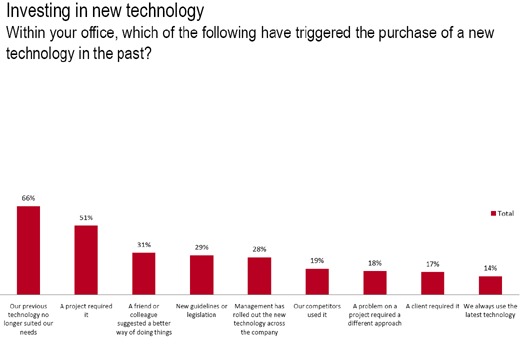
Figure 9: Within your office, which of the following have triggered the purchase of a new technology in the past? (Select to enlarge)
In conclusion
Within the construction industry there is a strong element of 'the old ways still work just as well today'. This is particularly true for manufacturers, who make up a significant part of the industry.
The main issue here seems to be that personal attitudes towards technology are not being reflected in organisational behaviour and purchasing. Only 14%t of professionals claim that, within their office, they always use the latest technology, despite the fact that 86 per cent agree that investment in new technology brings competitive advantage.
But perhaps some of the criticism of the construction industry's reputation for failing to adopt new technology is unfair. A lot of construction professionals are proactive and very positive about adopting new technology. Businesses within construction are generally reactive, investing in new technology only when their current technology becomes obsolete or a specific project they are working on requires it.
We saw that construction professionals are required to perform many different processes, using several different software applications on a couple of different technology devices. Laptops and smartphones have very high usage within the construction industry, reflecting the working practices of professionals who need to be out and about. It's likely that use of portable equipment like this will continue to increase in the next two years, along with CAD.
